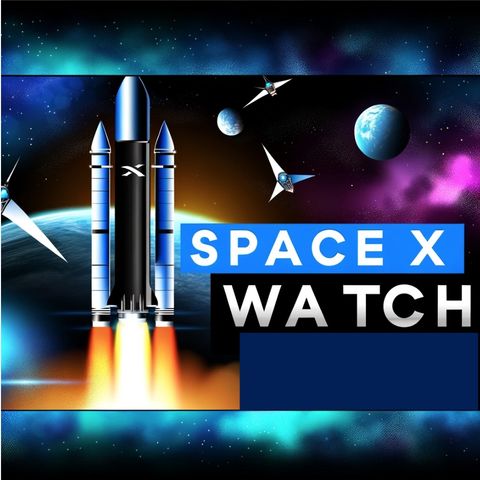Bridging the Connectivity Gap: SpaceX and T-Mobile's Ambitious Plan to Revolutionize Satellite-Powered Cellular Coverage

Sign up for free
Listen to this episode and many more. Enjoy the best podcasts on Spreaker!
Download and listen anywhere
Download your favorite episodes and enjoy them, wherever you are! Sign up or log in now to access offline listening.
Bridging the Connectivity Gap: SpaceX and T-Mobile's Ambitious Plan to Revolutionize Satellite-Powered Cellular Coverage
This is an automatically generated transcript. Please note that complete accuracy is not guaranteed.
Description
SpaceX, a leading private aerospace manufacturer and space transportation company founded by Elon Musk, has unveiled an ambitious plan to expand its Starlink satellite internet service to include cellular connectivity,...
show moreStarlink, operational since 2020, has been primarily focused on providing high-speed internet via a constellation of low Earth orbit (LEO) satellites. As of late 2023, SpaceX has launched thousands of these satellites, aiming to create a comprehensive network capable of delivering internet access globally. The collaboration with T-Mobile represents a strategic pivot towards using this infrastructure to enhance cellular service availability, potentially transforming communication in underserved regions.
However, this endeavor has not been without controversy and opposition. Concerns are multifaceted, encompassing technical, regulatory, and competitive aspects.
From a technical standpoint, the initiative faces challenges related to signal strength and reliability. Traditional satellite communication systems require specialized equipment, such as satellite phones or terminals. SpaceX asserts that its next-generation satellites will be able to communicate directly with standard mobile phones, eliminating the need for specialized hardware. This technical promise, if fulfilled, could be revolutionary, yet skeptics question the feasibility of delivering consistent and robust cellular connectivity via satellites, particularly in adverse weather conditions or in dense, urban areas.
Regulatory hurdles also present significant obstacles. SpaceX must obtain approval from various national and international bodies that oversee telecommunications and space operations. Each country has its own regulations concerning radio frequencies and satellite operations, and navigating this complex landscape can be time-consuming and uncertain.
Competition and opposition from other telecom providers add another layer of complexity. As SpaceX endeavors to enter the cellular market, traditional providers may see this move as a threat to their customer base, particularly in regions poorly served by current networks. These companies may resort to legal or market-based strategies to counteract SpaceX’s entry.
Moreover, environmental and astronomical communities have raised concerns. The increasing number of satellites in orbit poses potential problems such as space debris and interference with astronomical observations. Such issues have already attracted criticism towards large satellite constellations like Starlink, and extending operations into direct-to-phone connectivity may exacerbate these concerns.
Despite these challenges, the potential benefits of SpaceX and T-Mobile's partnership are significant. It promises to significantly extend cellular coverage without the need for infrastructure expansion, such as cell towers, which are costly and logistically challenging to install in less accessible areas. This could not only enhance personal communication but also improve emergency services and economic opportunities in remote locations.
As SpaceX continues to push the boundaries of what is possible in aerospace and telecommunications, the world watches closely. The success or failure of this endeavor will likely influence the future landscape of global connectivity, highlighting the intersection of innovation, regulation, and market dynamics in the modern technological era.
Information
| Author | Katie Brown 2 |
| Organization | William Corbin |
| Website | - |
| Tags |
Copyright 2024 - Spreaker Inc. an iHeartMedia Company
